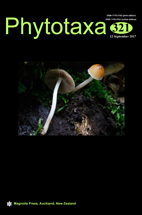Abstract
The genus Acer L. has about 156 species which are distributed in Asia, Europe, Northern Africa and North America. The species of Acer show extensive morphological and molecular diversity and the species that co-occur may hybridize; therefore, sometimes the species delimitation turns out to be difficult. Eight Acer (maple) species have been reported in Iran. The velvet maple—Acer velutinum Boiss (1846: 28)—is one of the largest maples in the world and the most frequent maple species in Iran. Morphologically speaking, two varieties have been cited for this species. Due to the extensive morphological variability, however, the researchers encounter difficulty delimiting these two varieties. Against this backdrop, the present study was performed with the aim to delimit two varieties of Acer velutinum by using both morphological and molecular approaches. It also aimed to proffer data on the genetic diversity of this species in the country. Nighty-four plant specimens of A. velutinum were randomly collected within 14 geographical populations at four provinces in Hyrcanian forests of Iran. The PsbA-trnHGUG intergenic spacer sequence of cp-DNA and the ISSR molecular markers along with the morphometric analysis and image analysis of the leaf shape were used. The numerical and phylogenetic analyses of the tree specimens from the presumed varieties of A. velutinum—based on morphology, image analysis of leaf shape, ISSR and cp-DNA—did not delimit these varieties; hence, A. velutinum was considered to have a high level of intergrading morphological variability. The population genetic study revealed significant molecular differences among the studied populations. The STRUCTURE plot and gene flow analysis (Nm), nevertheless, revealed some degree of shared alleles among the populations. The Mantel tests demonstrated significant correlation between the geographical and genetic distance of the studied populations; it further signaled the fact that the gene flow occurred mainly between the coterminous populations.

